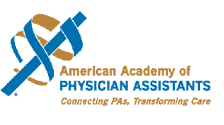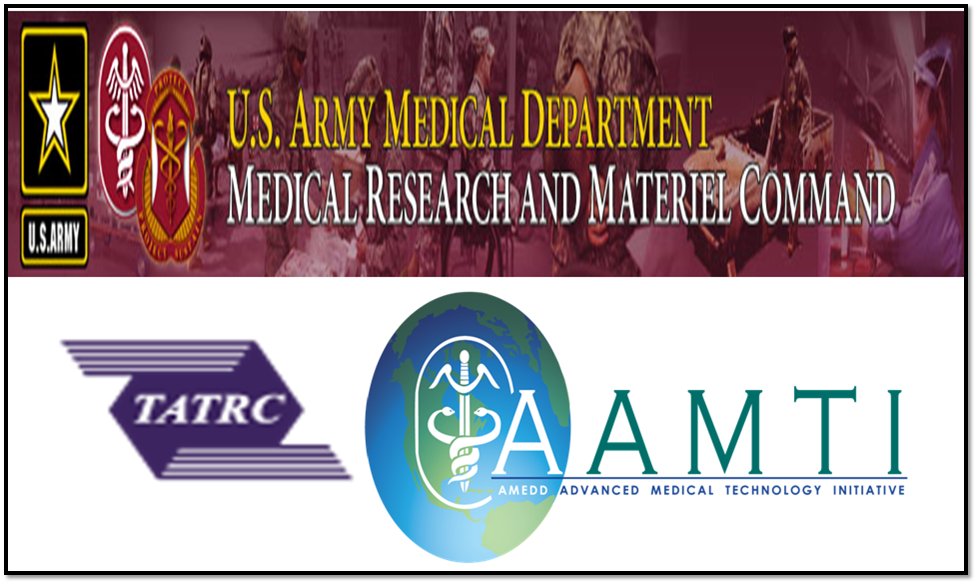Frequently Asked Questions
What is Post Traumatic Stress Disorder or PTSD?
PTSD is an anxiety disorder that occurs after a traumatic event in which a threat of serious injury or death was experienced or witnessed and the individual’s response involved intense fear, helplessness, or horror. In addition, the disorder is marked by the following symptoms occurring for more than one month and causing significant distress and/or impairment: re-experiencing the event, avoidance of stimuli relating to the event, numbing of general responsiveness, and hyperarousal (APA, 2000). PTSD is further defined by its linkage to exposure to traumatic or life-threatening events, such as combat. Major depression is often linked to grief and loss, which can be salient for service members who lose their comrades.
Why is it important to focus on Post Traumatic Stress Disorder?
Operations Enduring Freedom and Iraqi Freedom (OEF/OIF), in Afghanistan and Iraq, have seen the deployment of approximately 1.6 million U.S. troops since October 2001. Evidence suggests, and is supported by many, that the psychological toll of these deployments may far outnumber the physical injuries resulting from combat.
Historically, how many U.S. troops have been affected?
Mental health casualties have been tracked at least since World War II and among the 16.1 million U.S. troops who served in that war, it is estimated that the incidence of psychiatric-related casualties ranged between 28 per 1,000 and 101 per 1,000, depending on assignment (Dean, 1997). The Korean War (1950-1953), deployed some 5.7 million U.S. troops and the incidence of psychiatric related casualties was reported to be at the 37 per 1,000 mark (Dean, 1997; Jones and Palmer, 2000). In Vietnam (1960-1975), nearly 3.4 million U.S. troops served in the theater, with a reported incidence rate of 12 per 1,000 (Dean, 1997; Jones and Palmer, 2000). The estimates of PTSD in these past conflicts are also believed to be understated due to the lack of uniform evaluation and diagnosis, and inaccurate recording.
When did we as a nation begin to focus on PTSD and other related mental health problems?
In the midst of the Vietnam War, a more formal infrastructure was created within the medical system to more accurately diagnose and treat what would later be termed post-traumatic stress disorder and related mental health problems. This was also the first time the nation expressed a collective concern about the mental health and readjustment difficulties of returning veterans. It wasn’t until 1979 when this medical condition was defined that PTSD as a mental disorder not only earned its place in the history of battle trauma (Helmus and Glenn, 2005) but became identified as one of the enduring contributions of the Vietnam conflict.
What is known about PTSD and the Vietnam War?
Most early information on trauma and PTSD comes from studies of male veterans from the Vietnam era. During this time, researchers also conducted various studies of PTSD in one or more of the ethnic minority Vietnam veteran populations. The overall finding seemed to indicate that most ethnic minority veteran groups had a higher rate of PTSD than White veterans.
How are service men and women of recent operations (Operations Enduring Freedom and Iraqi Freedom, OEF/OIF) in Afghanistan and Iraq faring?
Returning veterans of OEF/OIF are demonstrating an increase in the incidence of suicide and suicide attempts resulting in similar concerns about rising incidence of major depression. Research related to the current day conflicts also indicates that higher rates of PTSD are found for service members of the Army and Marine Corps, and for service members who are not on active duty- i.e., National Guardsmen or Reservist.
Are certain individuals more at risk for developing PTSD or other related disorders?
It has also been shown that certain criteria place individuals at greater risk for PTSD and major depression and, after adjusting for a range of factors, that PTSD and major depression were more likely to be experienced by enlisted personnel, Hispanics, females, older persons, and those who had been injured or exposed to more extensive combat trauma.
What about adolescents serving in the military?
Approximately 47% of the active duty enlisted force is between 17 and 24 years old. This age range is medically classified as adolescence (10-25 years). It is critical that lay professionals as well as military allied health team members be uniformly trained in age appropriate patient/warrior centric mental and behavioral care management.
Why should considerations be made for adolescents serving?
There are three important points to remember about this age group:
- During adolescence, the brain begins its final stages of maturation and continues to rapidly develop well into a person’s early 20s, concluding around the age of 25 (Luna, 2005).
- The prefrontal cortex, which governs the “executive functions” of reasoning, advanced thought, and impulse control is the final area of the human brain to mature (Thompson, 2009).
- Adolescents must rely heavily on the parts of the brain that house the emotional centers when making decisions, because the frontal regions of the brains are not fully developed (Adolescent Brain Development & Juvenile Justice Fact Sheet (Act 4, JJDPA Face Sheet).
Why are women more likely to develop PTSD?
Overall, women are twice as likely to develop PTSD in their lifetime as compared to men (10% vs. 4%) (Vogt, 2009). Potential explanations for this significant difference include the increased likelihood of sexual assault, domestic violence and abuse among women as compared to men. Reviewing recent reports by the Veterans Health Administration found that PTSD was among the top three diagnostic categories for female veterans seeking treatment within the VA system underscoring the growing need to create and establish PTSD interventions tailored to women (OPHEH, 2009).
What has been the response to help service men and women of OEF/OIF?
In recent months there has been substantial public concern over mental and behavioral health issues culminating in the establishment of various commissions, task forces and review groups and a comprehensive study conducted by Rand Corporation regarding the health related needs of OEF/OIF active duty members and veterans with PTSD.
How can treatment for PTSD be optimized?
Growing evidence suggests it is critical to investigate the PTSD experience by race, ethnicity and gender in order to properly assess risk factors and maximize patient therapeutic outcomes. Even with all that is known, PTSD persists as a condition that is often invisible, unrecognized or unacknowledged by service members, family, and society in general. Reasons include multiple barriers to care available and quality of care that is delivered. Currently there is no system in place to control the quality of care, certify the standardization of patient centric/warrior centric evidence-based test practices, and knowledge to ensure the integration of culturally appropriate care by lay professionals and allied health team members.
What are the cost implications of PTSD?
The economic cost of PTSD, including medical care, reduced productivity and lives lost through suicide and homicide is estimated between $4 and $6 billion over the last two years (Tyson, 2008).
The report, “Invisible Wounds of War” forewarns of “long-term, cascading consequences” for the nation if mental health disorders among the military are left undiagnosed and/or under treated (Rand, 2008).
What has the Steptoe Group done to further examine this issue?
In the past months, the Steptoe Group sponsored a series of presentations and discussion forums on the “Invisible Wounds of War”. Post session, attendees were asked to complete a questionnaire on the issues covered. Responses provided an intriguing snapshot of the current state of mental and behavioral health services in the military health care system. Questionnaires were provided to allied health team members (e.g. physicians, nurses, social workers, chaplains, TRICARE administrators and behavioral health staff within the Army and Navy).
Where did the presentations and discussion forums take place?
Walter Reed Army Medical Center, National Naval medical Center and Ft. Meade-Warrior Transition Unit/Behavioral Health Team
What areas of focus did the questionnaire address?
The questions were grouped into the following areas: general stressors faced by military personnel, the impact of age on stress (e.g., coping methods, resiliency following traumatic event), availability and knowledge of assessment tools, patient-provider communication and cultural competency.
What do the findings indicate?
Generally, the findings indicate a need for a closer examination and evaluation of current and proposed assessment tools utilized in diagnosis and treatment of PTSD, mental/behavioral health. Responses grouped under cultural competence highlight the critical need for providing standardized training for lay professionals and allied health team members on the impact of culture and competence in evaluating, diagnosing and treating an age, gender, and racially/ethnically diverse service member base. Regardless of the responder (physician, nurse, Chaplin, allied health, army, navy, etc.) the following was overwhelmingly clear:
- Recognition of the need for culturally appropriate/sensitive assessment tools
- Training to insure standardization, appropriate and consistent application of techniques
- Organizational acknowledgement and valuation of the importance of age, gender, racial/ethnic, and cultural considerations
What are the recommendations of the Steptoe Group on this issue?
The military community is uniquely positioned to improve mental health outcomes for military service members, dependents, and veterans by adapting and/or replicating patient-centric evidence based best practice. These proven remedies offer an opportunity to enhance and ensure that culturally appropriate care is available through lay professionals as well as military health care providers.
The Steptoe Group believes that additional research is needed in this area.
What is the Steptoe Group, LLC?
The Steptoe Group, LLC is a certified Service Disabled Veteran Owned Business that works in partnership with government agencies and private organizations to provide access to quality health, science, and education services.






